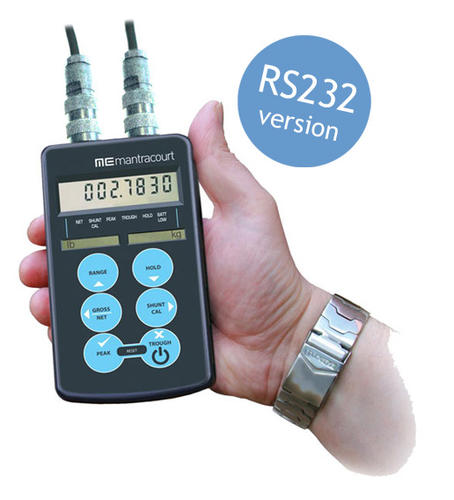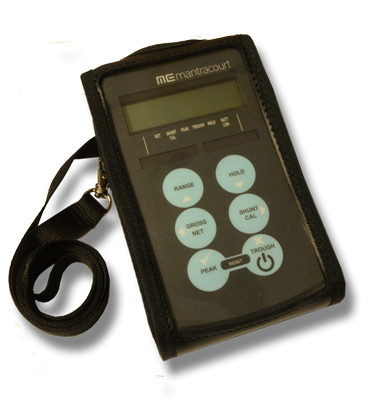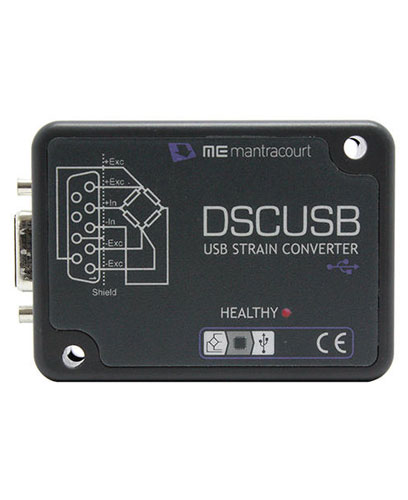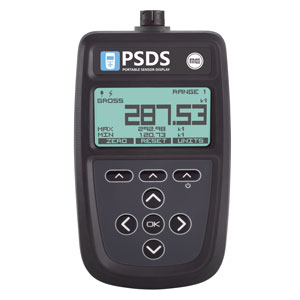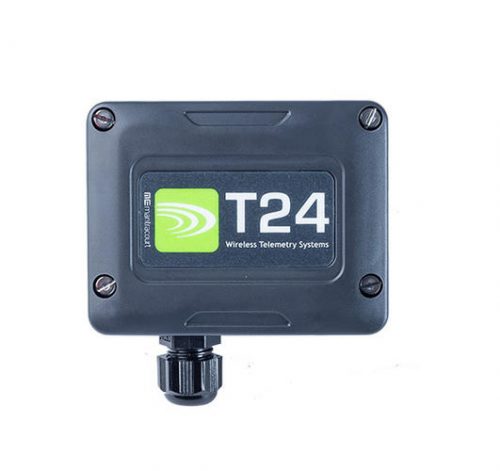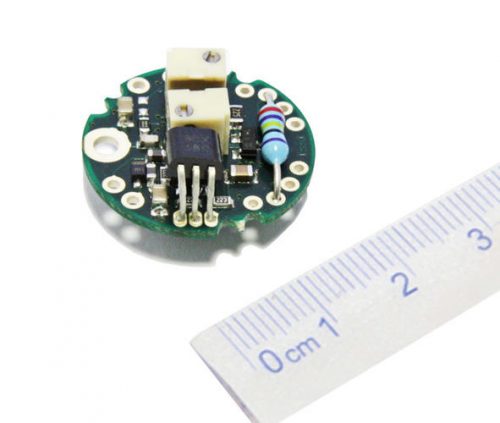- The RS232 version of the PSD the load cell or strain gauge handheld display with RS232 interface. This allows for connections to many interfaces including PCs and data loggers.
- Portable digital display for use as a strain gauge handheld. Easy to carry weighing only 250grams
- Waterproof IP65 NEMA4 battery powered
- 7 digit LCD display, with battery, peak, trough, net, overload and shunt cal indication
- Battery powered with life of 450 hrs in power save mode
- Tactile keyboard, with on/off, range select, peak/valley hold, and gross/net controls
- Microprocessor based, allowing single pass calibration facility (direct mV/V)
- Dual range for values such as Kg and lb
- TEDS enabled for automatic sensor calibration (IEEE1451 – template 33)
- Optional black leather carry case with clear viewing window and shoulder strap
Load Cell Handheld Display with RS232 Data Port (PSD232)
$638.00
Description
The strain gauge or load cell handheld display with RS232 interface enables the connection to many devices whether a PC or simple data logger. The PSD232 is fitted with a 8 pin connector which allows users to connect the appropriate cabling for their application.
As with the standard PSD handheld, the PSD232 weighs only 250 grams and has a 7 digit LCD display with 6 tactile push buttons for access to on/off, gross/net, peak, trough, display hold and shunt cal functions. The indicator is designed to interface with any full bridge sensor with an output sensitivity of up to 50 mV/V. Bridge resistances from 85 ohms upwards can be used.
Two units of measure are able to be read and displayed such as kg & lbs. An annunciator indicates which range has been selected and there is a window, to insert a legend, describing each unit of measure.
The menu options on the strain gauge or load cell handheld display is accessed via the tactile keypad and offers the ability to tailor the instruments response to the application, including configuring the display update rate to either 0.5 Hz, 1 Hz, 3 Hz or 10 Hz setting, auto power down and overload. Calibration is also performed from the menu. Up to 450 hours battery life can be achieved whilst in power save mode with powering via 2 x AA Alkaline batteries (not included). An auto sleep/off function can be set ranging from 1 minute up to 99 minutes.
Both PSD’s are TEDS ‘Plug and Play’ (Transducer Electronic Data Sheets) enabled.
1 year warranty with accessory options of a black leather carry case with shoulder strap which allows full operation of the PSD232 whilst being carried in the case.
The Case is Registered Design No. 3021311
PSD232
| Title | Version | Size | Hits | Date added | Download |
|---|---|---|---|---|---|
| PSD Product Sheet | 385.58 KB | 788 | 24-05-2021 | DownloadPreview | |
| PSD Manual | 3.1 | 928.13 KB | 820 | 25-05-2021 | DownloadPreview |
Q: Can I connect to RS232 using the PSD?
A: Yes, via the PSD232. This handheld can connect to most RS232 interface whether it’s a PC or simple data logger.
The PSD232 sends the displayed value to the RS232 port at 9600 baud in an ASCII format, terminated by a carriage return and line-feed making it suitable for stand alone data loggers, larger serial displays as well as interfacing onto a PC for logging which can provide a useful record during a calibration or load cell test.
The RS232 output is provided at the same time that the display is updated The update rate is user configurable with updates rate of up 10Hz.
Q: Can I use the handheld to indicate different engineering units?
A: Yes, 2 separate ranges are available, which enable the instrument to read and display two separate engineering units; i.e. lbs/kg, tonne/kN, etc. The menu options provide the user with the ability to completely tailor the operation of each range such as the display update rate, low power operation and RS232 output along with the resolution and decimal point position. Each range tracks its own peak and trough as well as its Gross/Net state all of which are saved on powering.
Q: How do I calibrate to the PSD?
A: The PSD is factory set to enable calibration with sensors generating an input signal of 5mV/V or less. In the majority of cases it will not be necessary to read higher signal levels.
The best method of calibration, if it is possible to do so, is via the Live calibration (via the PSD’s menu programme), as this reads in the sensor signal at two calibration points and scales the PSD automatically. If this is not possible, then the sensitivity figure (in mV/V) from the sensor calibration certificate can be used to scale the PSD, by using the Table (via the PSD’s menu programme) calibration. This may be the only option available if you are unable to apply a known stimulus to the sensor, which quite often is the case.
Q: What is TEDS and how does it work in the PSD?
A: TEDS is at the heart of the new universally accepted IEEE 1451.4 standard for delivering Plug and Play capabilities to analogue measurement and test instruments. In essence, information in a Transducer Electronic Data Sheet provides interfacing devices with the critical sensor calibration information in order to perform accurate and precise measurements every time. TEDS works in a similar way in which USB computer peripherals immediately work as they are connected. TEDS enabled equipment maybe swapped and changed without recalibration, saving time and money. TEDS holds information such as a sensor manufacturer, model and serial numbers, and more importantly all the calibration settings determined by the manufacturer.
As implemented according to IEEE P1451.4, data in the form of a Transducer Electronic Data Sheet (TEDS) is burned on an Electrically Erasable Programmable Read-Only Memory (EEPROM) chip located in the sensor or its associated connector. TEDS requires only a single additional connection from the sensor to the Instrument.
The main advantage of the TEDS enabled PSD is that one PSD can read from any number of TEDS enabled strain bridge sensors without the need for the operator to enter calibration data which can be a time consuming and erroneous operation.
Q: Can I connect the handheld to more than one sensor without using TEDS
A: Yes. Although the PSD has only one sensor input it does have two ranges. So the calibration and configuration data for two separate sensors can be held by the PSD. Each range has its own Peak & Trough value as well as tracking if it is in Gross or Net mode.

